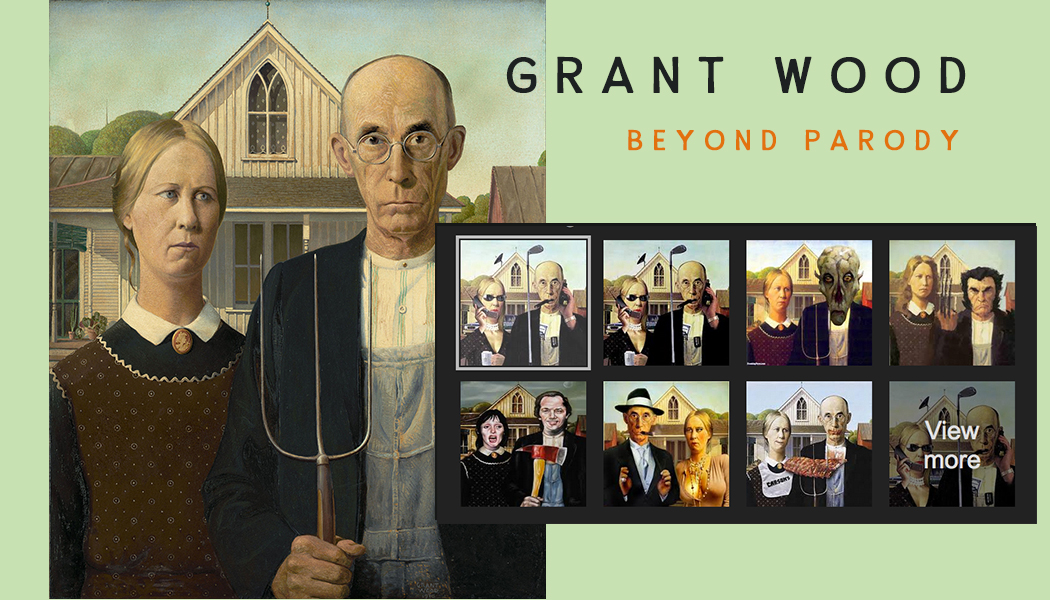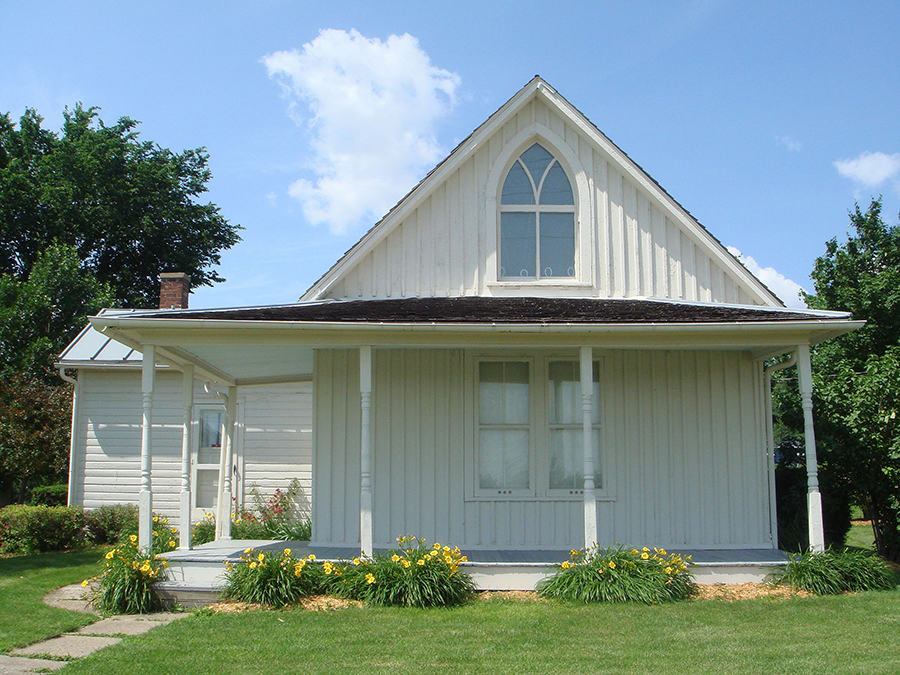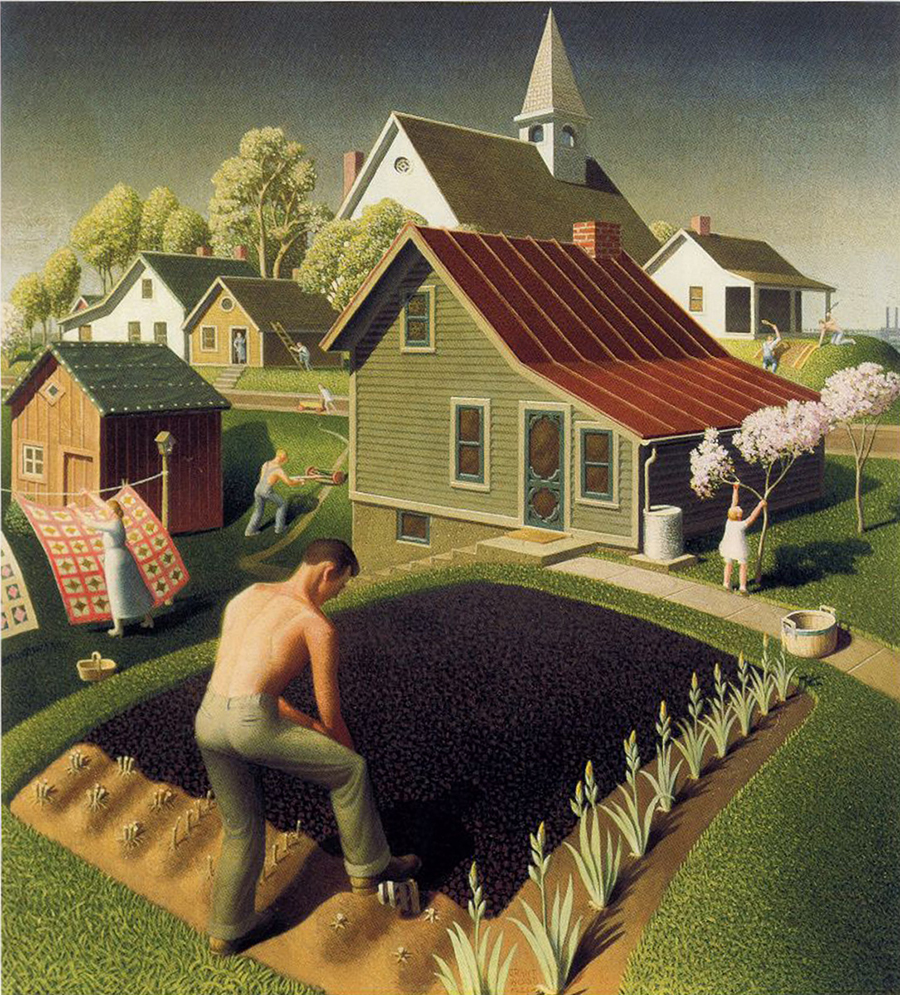Grant Wood Born on February 13, 1891, in Anamosa, Iowa, was a regionalist painter and best known for his paintings of the rural American Midwest.
His father was a stern Quaker Farmer who died when Wood was 10. Following the death of his father, the family lost the family farm and Wood and his mother and sibling’s grew up in 10×16 foot shanty in the outskirts of Cedar Rapids.
His encouragement for art came through his mother and by the age of 15 he was turning out watercolors with professional ease in his spare time while working as a machinist helper, farmer and handyman jobs to help ends meet. He was the sole provider for his family.
“The only drawing materials I could get”, he said, “were large sheets of cheap white cardboard that we enclosed in the wooden boxes of huge crackers that father bought in Anamosa… My first studio was underneath the oval dining room table which was covered with a red checkered cloth, the cloth hung with nice arched openings on both sides”.
Considered the “painter of the soil”, the small town atmosphere, farmland landscaping, family support and personal ambition, would become a significant factor of his future success as an artist. Articles published in Cedar Rapids referred to his work with pride as the artist who was “planting art in Iowa.
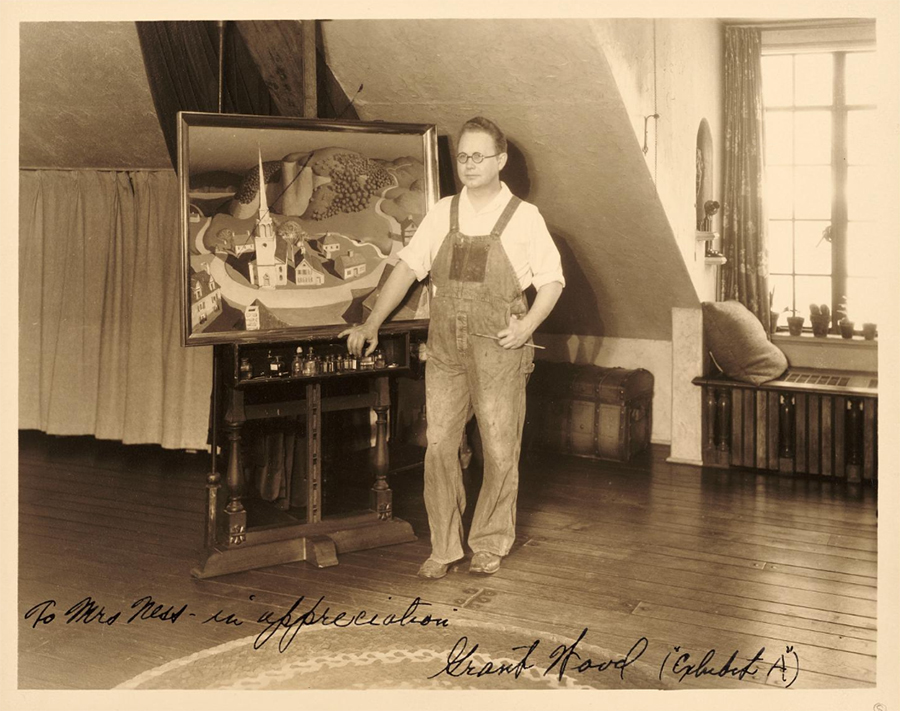
American Gothic – Celebrated as a Representation of the Pioneer Spirit
Grant Wood is mostly known for his iconic painting American Gothic. It is among the most recognized paintings in twentieth century American art, the painting is the model for hundreds of parodies across every creative medium.
The concept for the painting the home (also known as the Dibble House which exists in Eldon, Iowa) in the background was first sketched on the back of an envelope. Wood was inspired and captivated by the home and he painting the house along with the people he imagined might live there. The models, Wood’s sister, Nan, wearing a colonial print apron mimicking 19th century Americana, and Wood’s dentist, Dr. Byron McKeeby never sat in front of the house, and each element was painted separately.
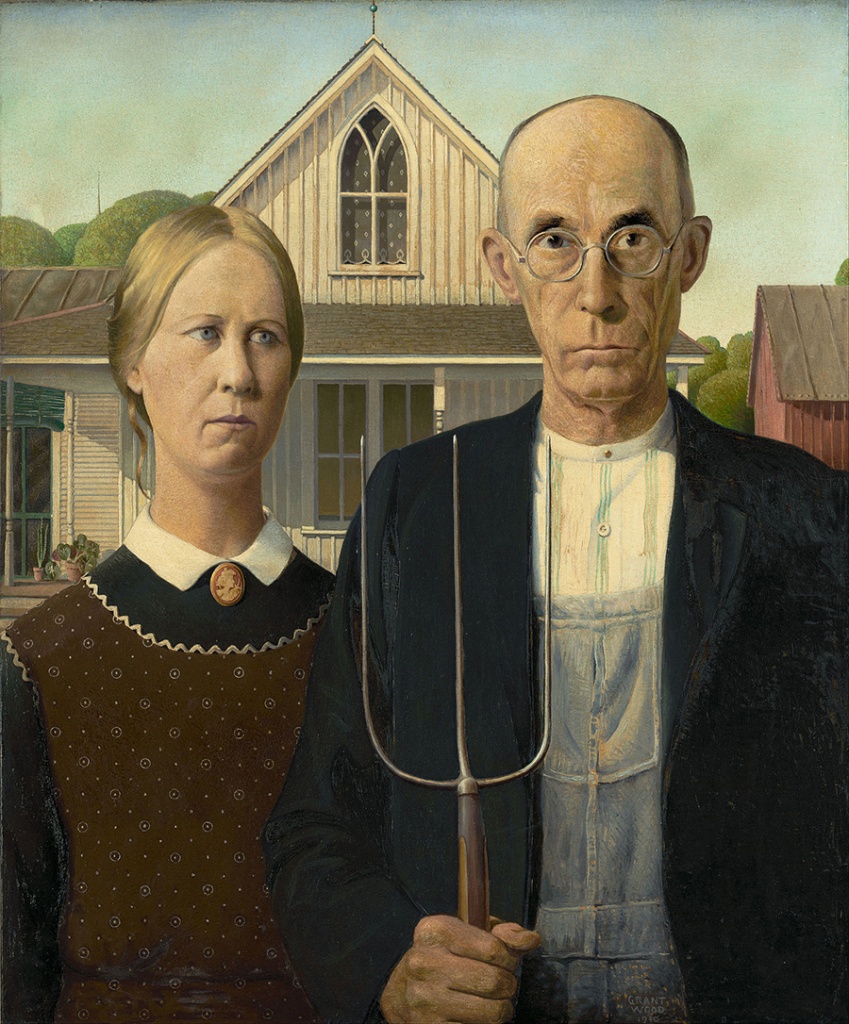
Upon completion, American Gothic was submitted to the annual painting completion at the Art Institute of Chicago. The Judges dismissed the painting as “comic valentine,” but a museum patron suggested that they reconsider and they awarded Grant a bronze medal and a $300 prize.
However the when the picture finally appeared in the Cedar Rapids Gazette, real Iowa farmers and their wives were not amused. To them, the painting looked like a nasty caricature, portraying Midwestern farmers as pinched, grim-faced, puritanical Bible-thumpers.
One Iowa farmwife told Wood he should have his “head bashed in.” Another threatened to bite off his ear. Hurt by the criticism, Wood declared himself a “loyal Iowan” and insisted that the figures were not intended to be farmers but small-town folk, not Iowans but generic Americans.
The Great Depression changed perceptions and American Gothic was no longer understood as satirical, but as a celebratory expression of populist nationalism.
Critics extolled the farmer and his wife as steadfast embodiments of American virtue and the pioneer spirit.
American Gothic is Wood’s most famous painting one of the few images to reach the status of the widely recognized cultural icon, comparable to Leonardo da Vinci’s Mona Lisa and Edvard Munch’s The Scream.
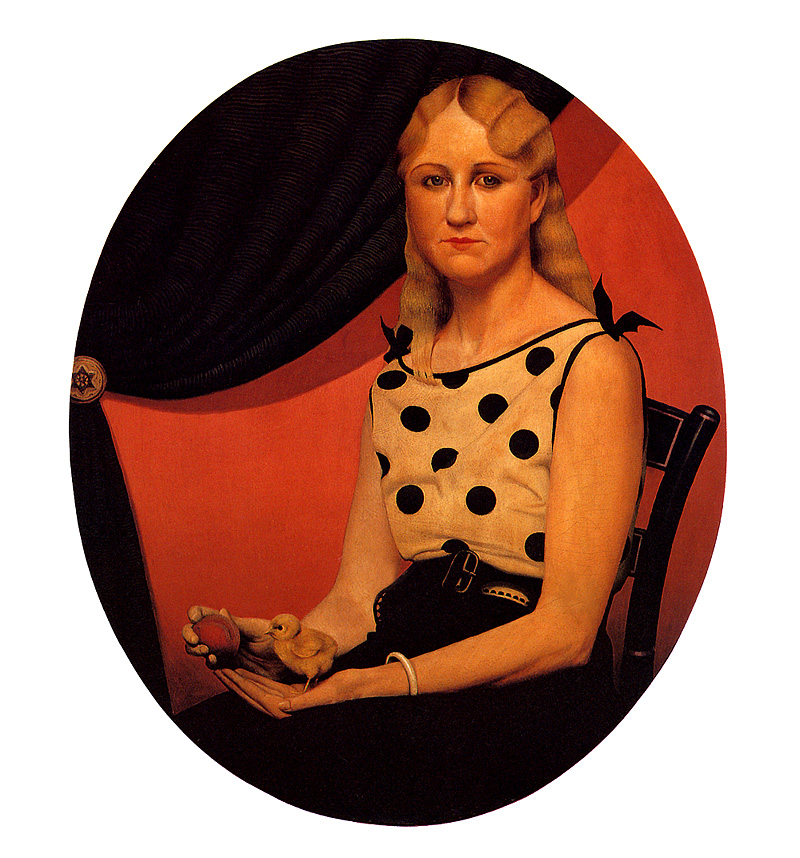
Portrait of Nan – The American Mona Lisa
When Grant Wood used his sister as the female model for American Gothic, he could not have foreseen how deeply her likeness would resonate. His rendering of a plain, stern-faced Iowa woman has a timeless, enigmatic quality that led some viewers to call her the “American Mona Lisa.”
Yet the image also stirred up some meanness. When American Gothic was first shown in 1930, there were critics who said that she looked like her face would turn milk sour. Wood was very close with his sister and she was one of his biggest advocates. As a sort of apology Wood painted Portrait of Nan in 1933. The painting was one of his works that he kept for himself.
Nan kept a detailed record of Wood’s paintings and articles though out the years in a scrapbook, shown here is an picture of Wood with a paintbrush and a dental instrument which he used to cut lithograph stones.
Spring in Town – His Last Painting
Spring in Town was Wood’s last painting before he died in February 1942. The painting was completed while he vacationed in a cottage dubbed “No Kare – No More,” It is believed that the idyllic scene emerged unconsciously from his greatest care of all: the childhood loss of his father and of the family’s Anamosa farm.
Significantly, Wood’s first conception of the picture coincided with the fortieth anniversary of father’s death on March 17, 1901. And as he began his composition, Wood chose for its central clapboard structure a house that stood at the edge of a cemetery. The earthen plot in Spring in Town doubles as garden and grave, while the figures surrounding it evoke family members who go about life without father.
“In making these paintings, as you may have guessed, I had in mind something which I hope to convey to a failry wide audience in America – the picture of a country rich in the arts of peace: a homely, lovable nation, infinitely wirth any sacrifice necessary to its preservation”
After the U.S. entered World War II, Saturday Evening Post enlisted Spring in Town as patriotic propaganda. The Post presented the tidy neighborhood scene overlooked by a church as a response to the question “For What Are We Fighting?”
Grant Wood’s last painting was published on the cover of Saturday Evening Post April 18 1942.
Arnold Comes of Age Captures Vulnerability
Grant Wood, Arnold Comes of Age, was painted in 1930 the same year as American Gothic. When Wood’s assistant, Arnold Pyle, turned twenty-one, the artist decided to commemorate the event with a portrait. The result is the stiff and shy image of a deeply serious Arnold, tall and gawky and yet sensitivity captured. The obviousness of the attributes the river of life, the cornsheaths, the butterfly at Arnold’s elbow, all express abstract thoughts, but Arnold’s expression, facing down adulthood, seems to reflect what Wood himself must have felt in his earlier years. Wood himself was known to be shy until he was well into his forties and had achieved national recognition for his work.
Tragically, in 1973, Pyle was killed in an automobile accident.
Beyond Parody
American Gothic is a frequently parodied image. However beyond the parody Grant Wood was a success in his day… a rags to riches story. His depictions of small town, simple life, and farming emphasized American life in a simple way, yet expressed with sensitivity. His work today brings a feeling of nostalgia and a glimpse into early American farm life in the rural Midwest.
Sources
Iowa Digital Library
digital.lib.uiowa.edu/
Grant Wood Art Colony
grantwood.uiowa.edu/springtime-myth-and-memory-grant-woods-last-paintings
Wikipedia
en.wikipedia.org/wiki/American_Gothic_House

